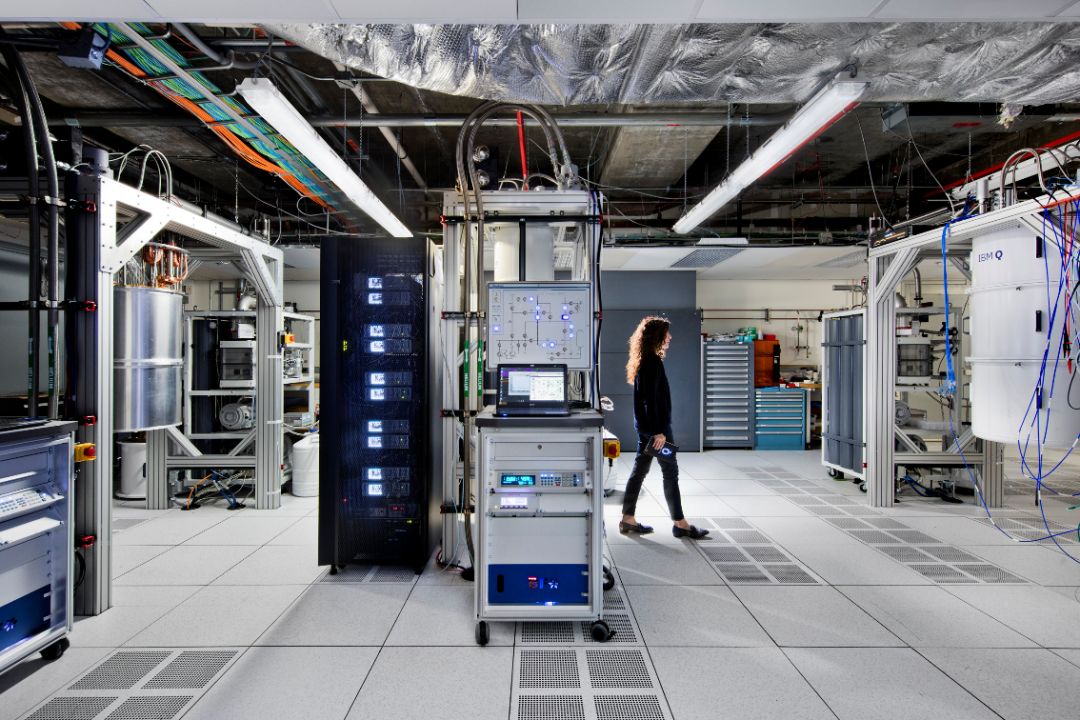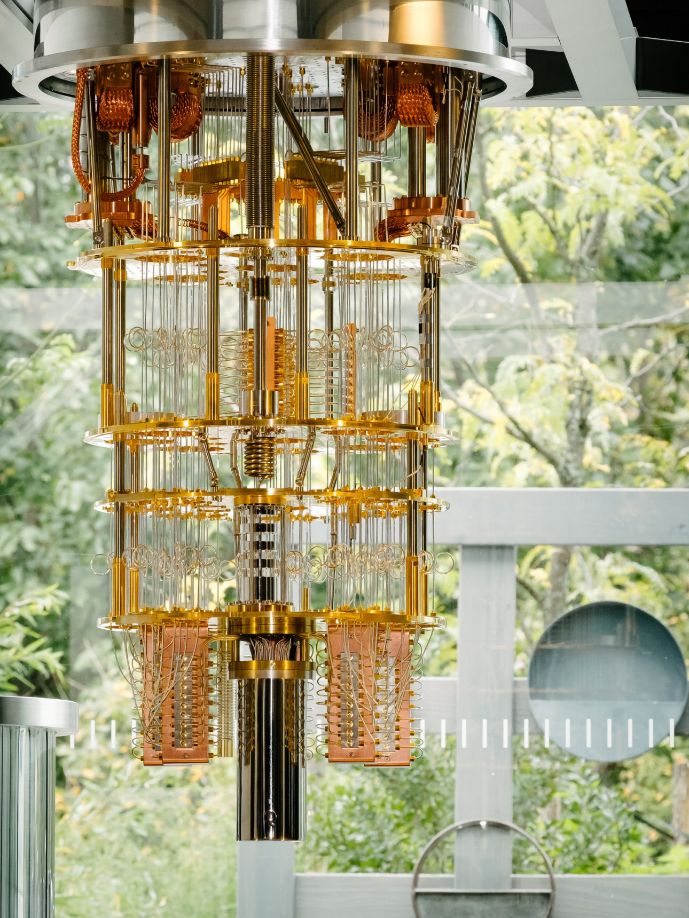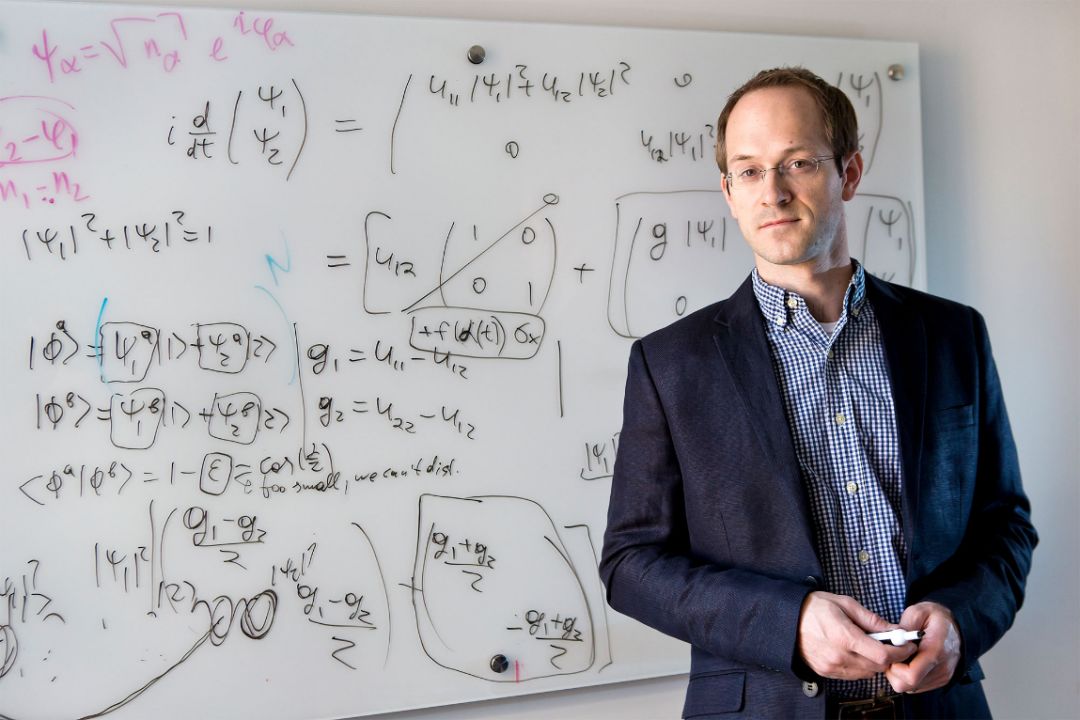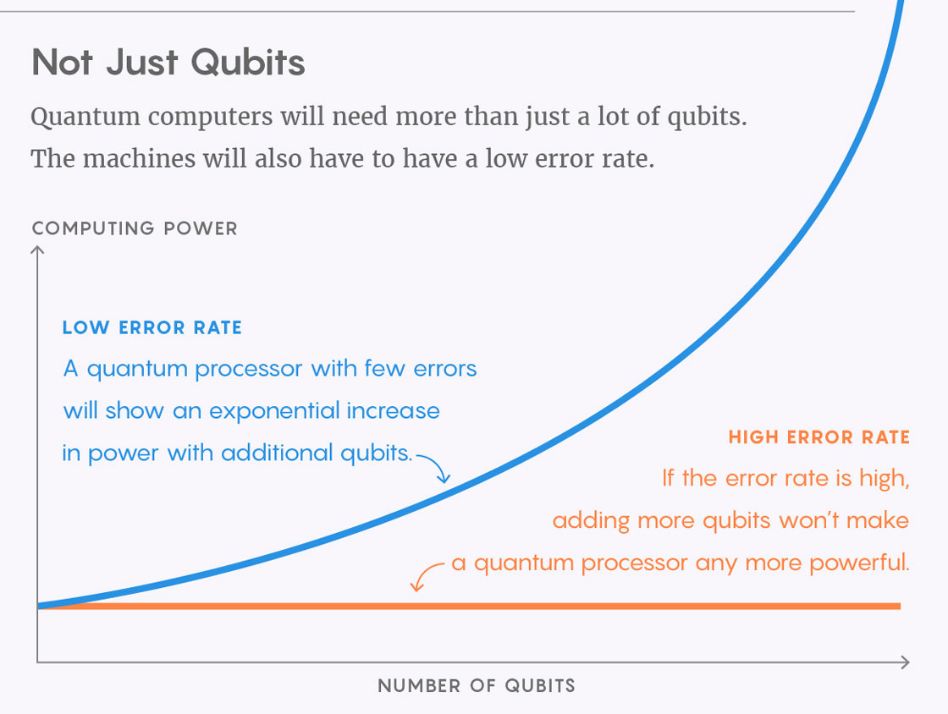
Quantum computers need to solve the problem of quantum noise. Quantum noise can quickly destroy the calculation results.
(Josef Bsharah, Quanta Magazine)
Quantum computers will soon be able to defeat classic computers in some basic work. But before they are truly powerful, researchers need to overcome many fundamental obstacles.
After decades of painstaking research, hopefully, quantum computing has been enthusiastically sought after. About two years ago, IBM made a globally available quantum computer. The platform with five qubit computing resources is called "IBM Q." However, it is more like a toy for researchers than for serious data calculations. However, 70,000 people worldwide have registered and the number of qubits on this platform has now quadrupled. In the past few months, IBM and Intel respectively announced that they have produced a 50- and 49-bit quantum computer, while the outside world thinks that Google also has a quantum computer waiting to be released. "This area has much to offer. Recent developments have also been fruitful," said Jens Eisert, a physicist at the Free University of Berlin.
Some people think that "quantum hegemony" is about to come true: By then, quantum computers can surpass the best classic supercomputers. If you compare the bits of the two computers, it sounds like a fantasy: how do 50 qubits match the billions of classic bits in your laptop? However, the focus of quantum computing is that a qubit has far more computing power than classical bits. For a long time, people thought that a computing task that a classical computer can hardly achieve can be realized with a 50-bit or so quantum computer.
From these incidents you may infer that all fundamental problems have been solved theoretically. Quantum computers will be everywhere in the future and only engineering problems need to be addressed. This idea is tempting but not accurate. The physical foundation of quantum computers is far from being resolved, and it is difficult to solve them easily in the manufacturing process. Even if we soon witness the arrival of the quantum hegemony milestone, it will take a year or two to decide whether or not quantum computers will bring about a computational revolution. There are still many difficulties ahead, and no one can guarantee the ambitious goal of "quantum hegemony."

At the Quantum Computing Center at the IBM Watson Research Center in Yorktown Heights, NY, they stored the quantum computer in a cryogenic storage tank (far right) and cooled it to zero degrees above absolute zero.
(Connie Zhou, IBM)
What is a quantum computer?
When quantum computers meet challenges, we need to understand simply the underlying theoretical physics behind them. Classic computers encode and manipulate information using a series of binary digits (1 and 0). The qubit is also coded in the same way, except that it may be in a superposition of 1 and 0. This means that if we measure this qubit, we may get 1 or get 0 and the probability of 1 or 0 is measured. It's all OK.
In order to implement computations using many such qubits, these qubits need to be in mutually dependent superposition states, also known as “quantum-coherent†states, in which the qubits are entangled with each other. Changes in qubits affect all other qubits. This means that the computational power that can be achieved for the computation of qubits will exceed that of classical bits. For classical computers, computing resources grow in proportion to the number of bits, and in quantum computers, adding a qubit can double computing resources. This is why the difference between 5 qubits and 50 qubits is so great.
Note that although it is often said that quantum computers have an advantage over classical bits, because the superposition state greatly increases the number of qubits that can be encoded, I have not said so. I also did not say that the existence of an entangled state allows multiple operations to be performed simultaneously. These descriptions cannot be said to be wrong, but none of them captures the core of quantum computing.

Inside IBM's cryostat, it connects a 50-bit quantum system.
(Connie Zhou, IBM)
It is difficult to explain why quantum computing is so powerful because it is difficult to define exactly what quantum mechanics is. Quantum theory's formula does show that quantum computing is feasible, and at least for computational problems such as factorization or database queries, it brings a huge increase in computational speed. But no one knows how this was achieved.
The most conservative argument may be that quantum mechanics created "calculative resources" that classic devices do not have. As Daniel Gottesman, a Quantum theorist at the Perimeter Institute of Physics in Waterloo, Canada, said, "With enough quantum mechanics resources in computing, the computational speed has increased, otherwise there is no."
However, some things are still clear. In order to achieve quantum computing, you need to keep all the qubits coherent. And this is very difficult. The interaction of the system composed of quantum coherent entities and its surrounding environment leads to the rapid disappearance of quantum properties, a process known as "decoherence." To build a quantum computer, scientists must try to extend the decoherence time, but current technology can only extend the time to a few tenths of a second. As the number of qubits increases, the possibility of contact with the external environment increases, and the difficulty in extending the decoherence time becomes greater. This is why early in 1982, Richard Feynman proposed a quantum computer. The theory of quantum computers was formed in the early 1990s, but until now people have created meaningful calculations. equipment.
Quantum error
Quantum computing also faces obstacles on the other hand. As with other processes in nature, there are noises in quantum computing. Heat from the qubits, random fluctuations from basic quantum mechanics processes can interfere with the state of the qubits, causing calculation errors. Noise also exists in classical calculations, but it is not difficult to solve - you only need to save two or three copies of each bit, so that a wrong bit can be easily found and removed. Quantum computer researchers have come up with strategies to solve noise problems, but these strategies are more like a burden - all your computing power is used to correct mistakes, not to run algorithms. "The current error rate severely limits the length of computations that can be performed by quantum computers," said Andrew Childs, co-director of the Joint Center for Quantum Information and Computer Science at the University of Maryland. "If we want to do something interesting, we need a much better strategy than that."

Andrew Childs, a quantum theorist at the University of Maryland, believes that error rates are worthy of caution. This is a basic and worthwhile question in quantum computers.
Many basic researches in quantum computing have focused on the problem of calculating error correction. The tricky problem in this area stems from another key feature of the quantum system: the superposition state can only be maintained if you do not observe the qubit value. If you measure, the superposition state collapses to a certain value: 1 or 0. Then the question is, if you don't know the state of the qubits, how can you find out if the qubits are wrong?
A clever idea is to make indirect observations by coupling the qubits to be observed with an auxiliary qubit that does not participate in the calculation. One can detect the auxiliary qubit without causing the collapse of the state of the measured qubit. However, this idea is more complicated to implement. This solution means that in order to form a true "logical qubit" for error correction, you need many physical qubits.
How much does it need? Alán Aspuru-Guzik, a quantum theorist at Harvard University, estimated that approximately 10,000 current physical qubits are needed to make a logical qubit—a completely unrealistic figure. However, he also believes that with the improvement of technology, this figure can be reduced to several thousand or even several hundred. Eisert is not so pessimistic. He believes that about 800 physical qubits may be sufficient, but even so, he thinks this is a huge overhead for computing resources. Now, we need to find new ways to deal with qubits that are prone to coding errors.
Another option for error correction is to avoid or eliminate their effects: also known as "error mitigation". For example, IBM researchers are developing a strategy to try to figure out how many errors will occur in a calculation and infer the theoretical “zero noise†limit.
Some researchers believe that the problem of error correction will be tricky and will hinder the realization of various grand goals of quantum computers. "Creating quantum error-correcting code is more difficult than demonstrating quantum hegemony," said Gil Kalai, a mathematician at the Hebrew University of Jerusalem in Israel. He also added that "for computing, equipment without error correction is really too primitive, and building hegemony on this basis is impossible." In other words, in the event that the quantum computer will be in error It can never go beyond classic computers.
Others believe that the problem will eventually be solved. Jay Gambetta, a quantum information scientist at the IBM-based Thomas J. Watson Research Center, said: "We recently conducted a research project at IBM to implement the basic elements of quantum error correction on a small device to achieve noise on large devices. It has paved the way for long-term storage of quantum information.†Even so, he admits, “There is still a long way to go to implement a fault-tolerant universal quantum computer using logical qubits.†This development has kept Childs cautious. Optimistic attitude: “I believe we will see progress in error correction in experiments, but there is still a long way to go before we can use this technique for practical calculations.â€
Coexist with errors
At present, quantum computers are prone to errors. The problem is how we get along with the wrong ones. At IBM, researchers are discussing a term called "approximate quantum computing," trying to find ways to adapt to noise.
Through an algorithm that can tolerate errors, we can still get correct results in the presence of noise. This is like the general election. If people remove a few wrong votes, they can get the correct election results. "A sufficiently large and high-fidelity quantum computer certainly has some advantages that classic computers do not have, even if it is occasionally affected by noise," said Gambetta.

Lucy Reading-Ikkanda/Quanta Magazine
At this stage, the most direct application of tolerating noise is material modeling at the atomic level. This may be the most valuable field for scientists, which is actually the motivation of Feynman to propose building a quantum computer. Quantum mechanics equations define a characteristic calculation that can be used to calculate the reaction stability and chemical reactivity of, for example, drug molecules. In the classical case, many simplifications have to be made to solve these problems.
Childs believes that the quantum behavior of electrons and atoms "is very similar to the original behavior of quantum computers." So we can use quantum computers to build a precise computer model of a molecule. "Many in this area believe that such equipment is expected to be widely used in quantum chemistry and materials science." Aspuru-Guzik said that he is promoting quantum computing in this direction.
Quantum simulation has proven its value on some very small quantum computers. The research team including Aspuru-Guzik has developed an algorithm called "variable quantum eigensolver" (VQE), which can efficiently find the lowest energy state of a molecule under noisy conditions. . Although so far, this algorithm can only deal with small molecules with a few electrons, and the classic computer is sufficient for the same job. But its performance has gradually increased. Gambetta and his collaborators demonstrated their ability to calculate molecular electronic structures using IBM's six qubit devices last September, including lithium hydride and hydrazine hydride. This work is "a quantum leap in hegemony," said Markus Reiher, a physical chemist at the Swiss Federal Institute of Technology. "Using VQE to simulate small molecule structures is a striking example of the recent use of heuristic algorithms." Gambetta said.
Even so, Aspuru-Guzik admits that if quantum computers are to really begin to transcend classic devices, logical qubits with error correction are essential. "I am very much looking forward to the day when the quantum computer with error correction is implemented."
"If we have more than 200 logic qubits, we have the opportunity to go beyond classical computers in quantum chemistry," Reiher added. "And if we have 5,000 such qubits, quantum computers will completely change this area."
How much does the computing capacity know?
Although it takes some challenges to achieve the goal, quantum computers have evolved from 5 quantums to 50 qubits in just over a year. This rapid development has given rise to hope. But we should not be complacent, because this is only one aspect of the quantum computer. What matters is not only how many quantum bits do you have, but how good your quantum bit performance is and how efficient your algorithm is.
Any quantum computation needs to be completed before the decoherence effect disturbs the qubits. In general, a group of combined qubits decohers for a few microseconds. The number of logical operations you can perform in this fleeting time depends on the speed at which the quantum gate switches. If the switching time is too long, then the number of qubits you can control is no more useful. The number of times a computation needs to manipulate the door is called "depth": Obviously the algorithm with smaller depth is more feasible, but whether such an algorithm can be used for valuable calculations is another problem.
In addition, not all qubits are equally noisy. Theoretically, the topological electronic states of specific materials can constitute low-noise qubits whose electronic states encode binary information without being disturbed by random noise. Microsoft researchers are looking for such topological states on special quantum materials, but they cannot guarantee that they will find or control this state.
IBM researchers use quantum volumes to describe the computational power of quantum computers. This parameter takes into account all relevant factors: the number and relevance of quantum bits, depth of algorithms, and other properties of quantum gates. parameter. The concept of "quantum capacity" can fully describe the capabilities of quantum computing. Gambetta believes it is imperative to develop quantum computing hardware that can increase quantum capacity.
This is the reason why the exaggerated concept of "quantum hegemony" seems to be so unreliable. A 50-qubit quantum computer surpasses a state-of-the-art supercomputer. This picture is indeed very tempting, but it also leaves many unanswered questions. What exactly does a quantum computer do better in those areas? How do you determine that the quantum computer has the correct answer without going through a reliable classic device check? How do you know that classical computers cannot do better with better algorithms?
Therefore, "quantum hegemony" is a concept that requires careful treatment. More and more researchers are now tending to use "quantum advantages". This representation refers to the speedup of quantum devices, without asserting which device is more dominant. Because of racial and political reasons, people are also increasingly disgusted with the term "hegemony."
Regardless of its name, quantum computers can have significant implications beyond classical calculations. "Defining a clear quantum advantage will be an important milestone." Eisert said this shows that quantum computers can really expand their technological possibilities.
Determine the "quantum advantage", its symbolic significance may be greater than the actual value. But such things are still important, because if quantum computing is to succeed, companies like IBM or Google cannot suddenly sell their new devices, but they need to fully interact with developers and users. This is why both IBM and Google are keen to open up quantum computing devices to the public. After IBM's 16-bit qubit computer is open to all registered users, a 20-bit version is also open to corporate customers including Morgan, Daimler, Honda, Samsung and Oxford. Not only can customers explore the uses of quantum devices, but they can also create a quantum-based community to help developers solve problems that no company can do on its own.
"For quantum computing to come into formal and bear fruit, we must let the world use and learn it," Gambetta said. "Scientists and companies all over the world should concentrate on meeting the arrival of the quantum computing era."
Pressure Core,Pump Pressure Switch,Automatic Water Pressure Pump,Smart Water Sensor
Shenzhen Ever-smart Sensor Technology Co., LTD , https://www.fluhandy.com